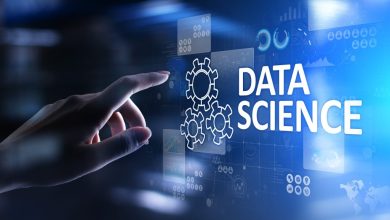
Generative AI is revolutionising cybersecurity. While attackers are learning to exploit it, defenders have an even greater opportunity to turn it into their strongest ally.
From fake job listings aimed at recent graduates to sophisticated impersonations of trusted employees, no one is immune to AI-powered threats. In fact, a 2025 Gartner survey found that 62% of organisations experienced a deepfake attack in the past year, while 67% of cybersecurity leaders said emerging Gen AI risks require significant changes to existing security approaches. At the same time, forward-looking companies are already proving that the same technology can detect anomalies, stopping attacks faster.
The rise of Gen AI has also introduced a new layer of personal risk for businesses. Cybercriminals are using synthetic audio and deepfake video to impersonate CEOs and senior executives, bypassing traditional authentication systems and manipulating staff in real time.
As threat actors grow more sophisticated, leading organisations must be ready to respond with equally intelligent, and resilient AI in cybersecurity. For while Gen AI is making headlines for all the wrong reasons, it can just as easily be a force for good.
In terms of security, it can automate manual, repetitive tasks and edit complex code, helping security teams scale their capabilities without stretching their resources. As a result, it’s freeing up stretched cybersecurity teams, allowing them to focus on high-level decision-making. Tasks that once took hours can now take place autonomously.
It’s also enhancing the readiness for emerging threats by creating sophisticated models that analyse threat intelligence data, which can identify anomalies and predict attacker behaviour patterns. These capabilities allow security systems to respond more rapidly and effectively, helping organisations prepare teams for future attacks.
The need for AI guardrails in cybersecurity
Yet as we unlock the benefits of Gen AI, embracing a clear sense of responsibility is essential.
And as Gen AI becomes more deeply embedded in cybersecurity operations, we need to ensure that it is used responsibly. Without the right guardrails, all forms of AI – not just Gen AI – can be just as dangerous as the threats it’s designed to stop. What’s needed is a clear framework focused on accuracy, auditability, and explainability. Security teams embracing Gen AI and other AI-powered tools need to ensure that AI strengthens our defences, rather than introduces new vulnerabilities.
To truly harness AI’s full potential, responsibility needs to be embedded into every layer of cybersecurity strategy. This means maintaining human oversight by setting ethical boundaries and insisting on transparency across AI-generated decisions. For high-risk environments like finance and healthcare, explainability becomes especially crucial. Security teams should understand why a system flagged a threat or recommended a response, not just accept that it did. This visibility enables them to validate or override alerts with confidence.
That said, without real-time, context-aware intelligence, these systems will fall short. With threats evolving constantly, static models that are trained on outdated data can easily miss emerging anomalies. For AI to make informed decisions, it must be powered by live, contextual insights to help it understand what “normal” looks like across different devices, endpoints, and users. Without that context, AI is a blunt tool. With it, it becomes a support system, helping security teams respond quickly and with accuracy.
Toward the future of AI and cybersecurity
When powered by real-time data, AI becomes more than a predictive tool. It enables proactive, real-time defence against evolving threats. One of the most promising applications of this is Autonomous Endpoint Management (AEM). It can take confident, autonomous action at machine speed — isolating compromised devices, rolling back unauthorised changes, or patching known vulnerabilities — all according to playbooks set by security teams. By handling these time-critical responses automatically, AEM gives humans the freedom to focus on higher-value tasks: investigating root causes, strengthening policies, and anticipating the next wave of attacks.
For some, the idea of adopting autonomous AI tools raises the concern that cybersecurity jobs will be replaced by AI. This is why for companies looking to leverage AI in their workflows, it’s important to ensure that human insights are at the forefront of every process. The goal isn’t to remove humans from the loop, but to reduce friction and enable machine-speed responses that still reflect human judgement and policy. When done right, AI becomes a powerful support system – it amplifies, not replaces human expertise.
As with any powerful technology, Gen AI needs to operate with clear boundaries. Human oversight will remain essential to help guide AI, not limit it. Guardrails like role-based controls, escalation thresholds, and real-time visibility ensure AI systems act with precision and accountability.
This is the future of cyber resilience we are moving towards. Systems that are adaptive, autonomous and guided by human values, capable of responding to threats as quickly as they evolve without compromising trust or transparency.
Responsible innovation is the way forward
With Gen AI, the stakes, and the opportunities, in cybersecurity have never been higher. It offers the chance to do more with less, to respond faster than ever, and elevates the role of every security professional. But it also calls for vigilance, human foresight, and clear ethical guidelines to follow.
As more organisations adopt AI, teams must consider not just what AI can do, but what it should do. Let’s shape a future where AI is not only powerful but principled and guided by human intent.
The opportunity AI provides for security teams is immense, and so is the responsibility. It’s up to us to strike the right balance.




